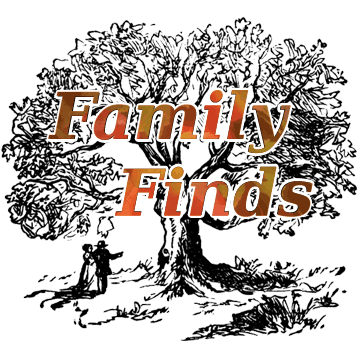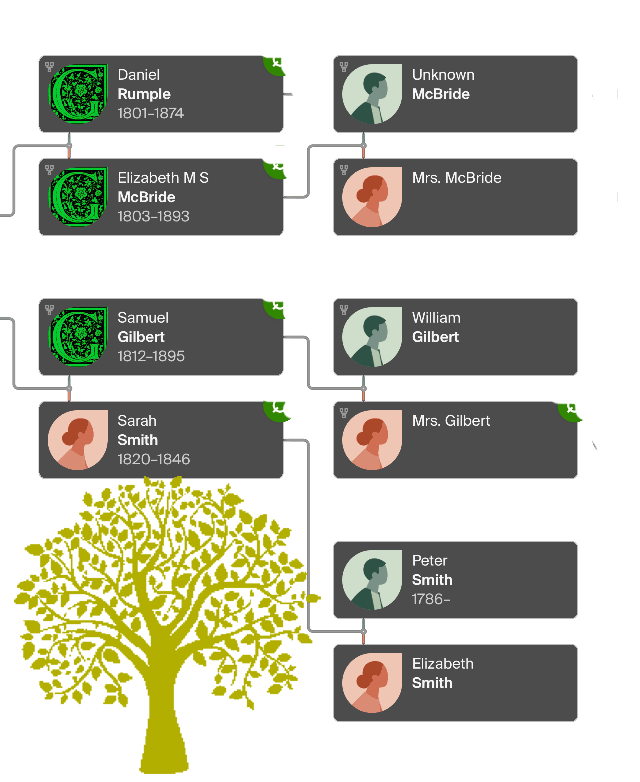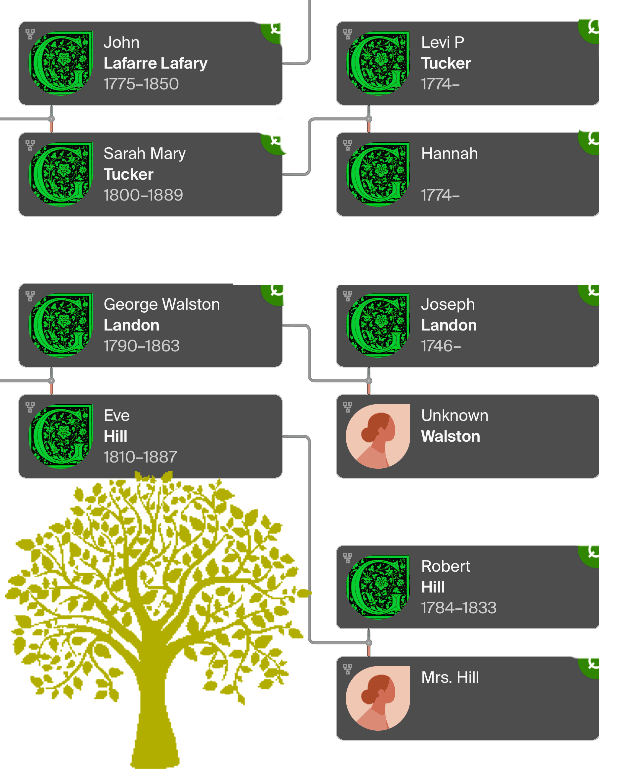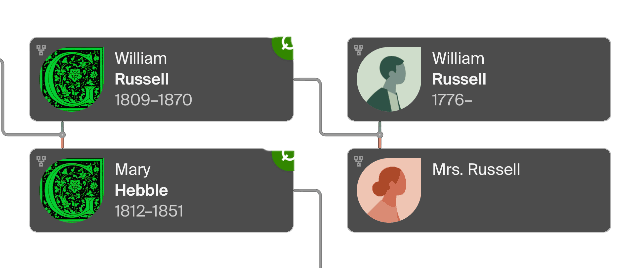52 Ancestors,
in 52 Weeks
Week 4:
Curious

I Am Curious About…
Because I am focusing on identifying my 4th great-grandparent brick walls this year, I have a lot of questions about research techniques. In particular, I am curious how other genealogists go about researching ancestors with common surnames. Among my ancestors I am currently researching are the surnames Smith, Gilbert, Russell, and Hill. All are very common. Another ancestor I am researching, named Koontz, has a number of spelling variations that cause the surname to be somewhat common and all the more difficult to research. So, I am curious. What techniques have others successfully employed when it comes to common surnames? Please contact me with advise!
Time
For all the ancestors on my tree, my primary research focuses on time based records: vital and census. However, for the 4th great-grandparents I am currently researching, most lived prior to any government collection of birth, marriage and death records. Church records may be available for those who attended an organized church. They did live during the period when the U.S. federal government began collecting census data every ten years. Of course, only heads of households were named in the census until 1850 and those were mostly adult men. Among my missing 4th great-grandparents are 5 men. Which means, I have a good chance of finding them in the early 19th century census records. The hurdle I will face is their surnames: Russell, McBride, Gilbert, Smith and Koontz. I am curious, how do other researchers find early 19th century ancestors successfully?
Place
A secondary source I often turn to are local newspapers and land records. But, in this case, the ancestors I am researching lived in very rural areas where papers were not published. Or, at least, they were not saved for historical purposes. Land records, however, were recorded and many have been digitized. So, I plan to seek my missing five 4th great-grandfathers in land records and, again, the only difficulty should be their common surnames. Adding to that, is the fact that surnames tend to cluster, particularly for my rural, farming ancestors. A strategy I plan to employ will use the land records to map locations where men with these surnames lived. If I find any living near my known 3rd great-grandparents, I will consider them a strong lead. I am curious, how do other researchers use land records successfully?
NOTE: For both time and place, I may find probate records. Particularly for the 5 men I am researching. Since probate records were recorded, many have survived, and some are digitized. And, if probate records are found, they could be useful in identifying their wives.
Friends and Neighbors
The FaN research method is popular in genealogy. If I research my known 3rd great-grandparents’ neighbors, who are on census and land records, I may get a clue to my missing 4th great-grandparents. This is particularly true for my Gilbert ancestors who I have found on land records with a man named Immel, a much easier name to research. This process can be tedious, but for ancestors with common surnames it should lead to some good leads. I am curious, how do other researchers use FaN successfully?
DNA
Here is a research tool I have only been able to use successfully a few times. But those were mostly simple, straight-forward, connections. In the case of my missing 4th great-grandparents, I am attempting to use the “ThruLines” product that is part of AncestryDNA. I am also reading about DNA Triangulation and how that may help with my quest. One strategy I have read about, is to choose a likely person as the missing ancestor and see who, among my DNA matches, has that person on their tree. I have done this and will write about my results next week. The challenge here, 5th cousins (people who share my 4th great-grandparents) have very little DNA in common. And, because we all have 32 couples for 4th great-grandparents, we potentially have a lot of 5th cousins, 10’s of thousands. Of course, only a fraction have tested their DNA, and shared it where I can compare it to my own and other known relations. I am curious, how do other researchers use DNA successfully?
Conclusion
So, I am curious, what methods have others used to successfully research ancestors with common surnames. Particularly those who lived 200 years ago, and lived agrarian lifestyles in sparsely populated areas of the United States. I am using the methods outlined above, but I am making little headway. Any advise or guidance will be appreciated. Sign me, Curious.
SOURCES:
- Blog post, Family Finds: Brick Wall; https://barblafara.com/genealogy-brick-walls/
- Profile of William Russell, ‘Osborn‘ tree, Ancestry.com; https://www.ancestry.com/family-tree/person/tree/13493206/person/27581740986/facts
- Profile of Mrs. Gillespie, ‘Osborn‘ tree, Ancestry.com; https://www.ancestry.com/family-tree/person/tree/13493206/person/5085061848/facts
- Profile of Unknown McBride, ‘Osborn‘ tree, Ancestry.com; https://www.ancestry.com/family-tree/person/tree/13493206/person/27581748924/facts
- Profile of Unknown Gilbert, ‘Osborn‘ tree, Ancestry.com; https://www.ancestry.com/family-tree/person/tree/13493206/person/26046078420/facts
- Profile of Christian Immel, ‘Osborn‘ tree, Ancestry.com; https://www.ancestry.com/family-tree/person/tree/13493206/person/26045316684/facts
- Profile of Sarah Smith, ‘Osborn‘ tree, Ancestry.com; https://www.ancestry.com/family-tree/person/tree/13493206/person/26119687041/facts
2 Comments
Submit a Comment









County histories might be helpful (Linda Stufflebean has state-by-state links to digitized county histories on her blog) and of course newspaper research too. I’m sure you’ve tried creative spelling! Wishing you best of luck.
Many thanks! That’s a great idea and I will try that out. Some of these ancestors are likely among the pioneers of their counties and may well be included in a history.